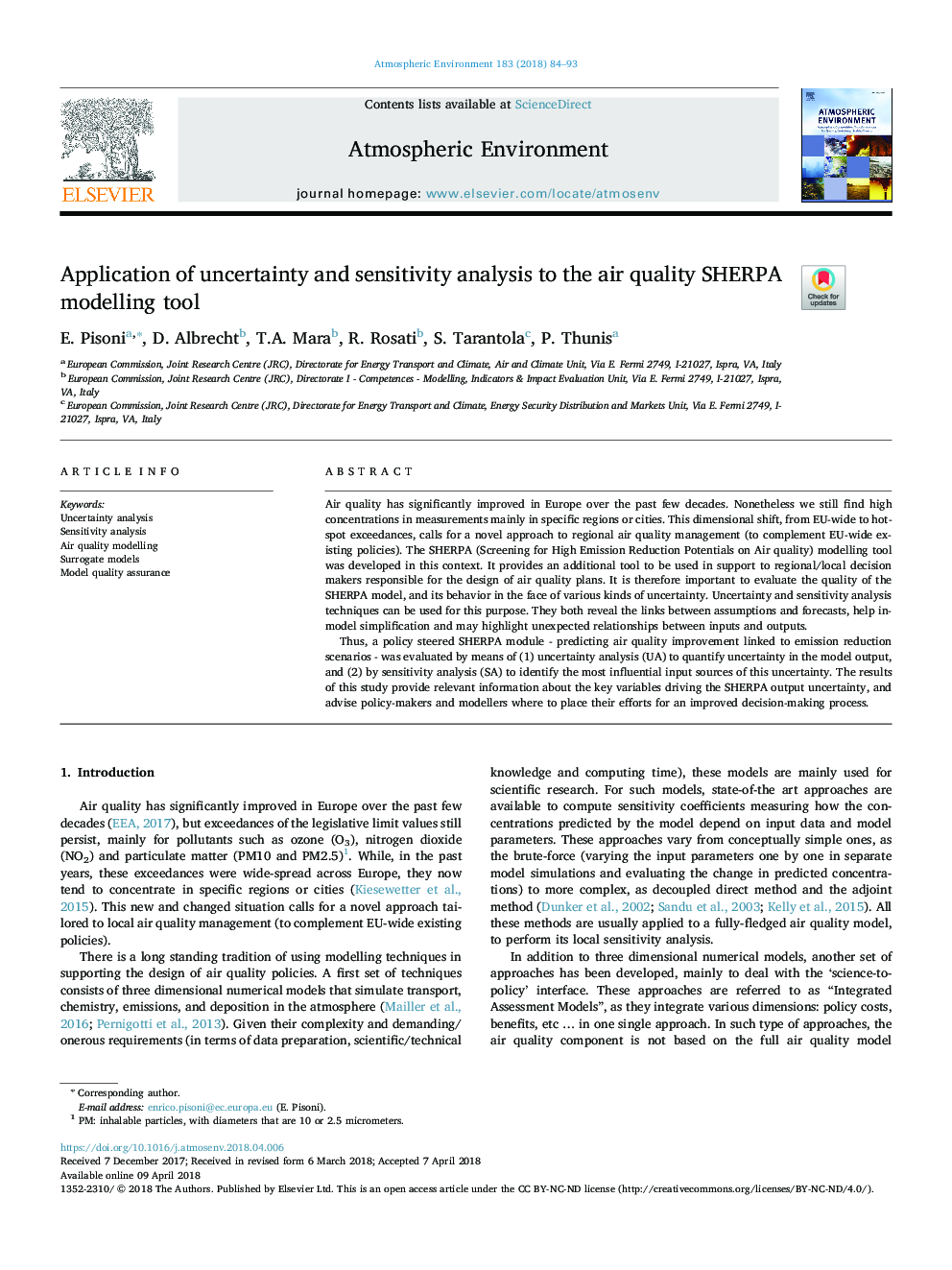| Article ID | Journal | Published Year | Pages | File Type |
|---|---|---|---|---|
| 8863825 | Atmospheric Environment | 2018 | 10 Pages |
Abstract
Thus, a policy steered SHERPA module - predicting air quality improvement linked to emission reduction scenarios - was evaluated by means of (1) uncertainty analysis (UA) to quantify uncertainty in the model output, and (2) by sensitivity analysis (SA) to identify the most influential input sources of this uncertainty. The results of this study provide relevant information about the key variables driving the SHERPA output uncertainty, and advise policy-makers and modellers where to place their efforts for an improved decision-making process.
Related Topics
Physical Sciences and Engineering
Earth and Planetary Sciences
Atmospheric Science
Authors
E. Pisoni, D. Albrecht, T.A. Mara, R. Rosati, S. Tarantola, P. Thunis,
